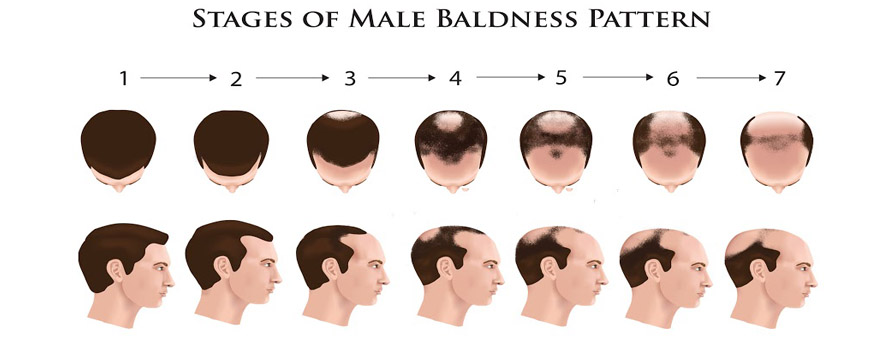Stages and degrees of male pattern baldness according to Hamilton Norwood

In order to determine the best course of hair restoration, it is important to find out the stage of baldness. The Norwood-Hamilton scale is accepted as a standard to measure the extent of hair loss in men.
There are several patterns for male hair loss. The most common are a receding hairline beginning at the temples, thinning at the crown of the head (also called the vertex), and general thinning of the hair across large areas of the scalp without much direct change to the hairline. Men can experience one of these patterns of hair loss or a combination of all three.
The classification of hair loss includes seven degrees of alopecia:
- Initial stage. No significant hair loss or recession of the hairline
- Stage II. A slight recession of the hairline around the temples.
- Stage III. The first signs of balding start to appear. The hairline becomes deeply recessed at both temples. The recessed spots are completely bare or sparsely covered in hair.
- Stage IIIa. Active hair loss on the top of the scalp (vertex)
- Stage IV. The hairline recession is more severe, there is very few hair or no hair on the top of the scalp.
- Stage V. The areas of hair loss is are larger and the hairline separating them becomes more narrow.
- Stage VI. The hair between the crown and vertex has fallen.
- Stage VII. Complete loss of hair except a small part of the hair remains only in the area of ears and neck.
Only careful attention to yourself and the diagnosis of alopecia at the initial stage will allow you to quickly eliminate the problem and avoid complete baldness!
All Comments


مسعود الدرعي
January 11 , 2019